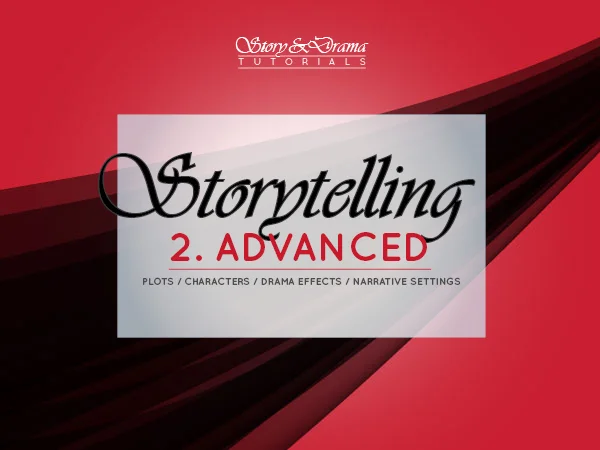 |
|
PDF, 117 pages
|
The importance of characters
Characters are the soul of stories
Characters give meaning to actions, feel motivations and desires, have intentions, follow goals, engage in conflits of values, of opinion, of strategy, seduce or frighten the audience, make us react.
They can be the mirror of our reality, or embody impossible fictions or baroque imaginations.
The characters are a core element of stories, and the characters who mark the memory of millions of people today are more complex, more elaborate and more technical than the characters conceived and animated by an averagely gifted amateur.
Thematic role and actantial role
Technically, a character has 2 sides:
Thematic role: job, family, age, personality, context, back-story…
Thematic role is like the ID of the character, and the indication of its situation within a given world. Thus we could write a story with 4 characters:
- Medieval Japan, 2 wandering knights and their 2 servants
- England 1965, 2 schoolboys and 2 schoolgirls
- Orbital Station, in the future: Professor X, his assistant Z, a lost astronaut, and the Hero, an astronaut too
- Videogames tournament, 4 different teams
With thematic roles we can rebuild a world, give characters some identity, personal details. But, those thematic roles are not enough in themselves to create action and drama.
Actantial role: Hero, Helper, Antagonist, Mentor…
The actantial role is defined by the position of a character in the set of characters of a plot towards the goal of a Hero. Actantially, a character can be Hero, Helper, Antagonist, Mentor, or Skeptic. Actantial roles are:
- Temporary or permanent. It is possible to be the Hero for a 1 page plot, or to be a Helper just for one moment.
- Additive. A character can take 0, 1, 2, 3… roles.
- Shareable. Several characters can embody a role. For example Astérix and Obélix are often the Hero.
Those 2 types of roles can be set in harmony or in contrast together. A Father is often a Hero, so it is fun to revert the roles and to make Baby the Hero.
With actantial roles we can rebuild life in this world, we can rebuild the dynamics of a world. Our characters take position in a general struggle of goals, intentions, strategies, and that generates action and drama.
The thematic role
Thematic roles can help rebuilding a (selected) reality
Sets of characters imitate reality’s data: sociology, psychology…
- The characters of The Godfather represent Italo-American Mafia gangsters and families, in the 1950’s to the 80’s, in NY, Las Vegas, and Sicily.
- The characters of Astérix and Obélix represent Gaul resisting the Roman empire: tribe’s leader, druid, beautiful lady, fish-seller, fighters…
- The characters of Star Wars represent the strange populations on many planets in a far future, during an epic fight to save or destroy the universe: robots, humans, humanoids….
Sets of characters, and characters’ properties, will closely depend on the genre and style of the story.
For example, in a western story, we will expect finding:
- Cow-boys, fast gunners, men riding horses
- Old toothless peasants and quiet citizens
- Indians attacking, or under attack
- Poker players in saloons, etc.
But we will not find astronauts, Christian saints, dragons, geisha, computer hackers, Japanese kamikaze, magic toys, etc. They just do not belong to the mythological society of the Far West.
Genres provide collections of available thematic roles
Genres are very appreciated because they allow authors and audiences to synchronize. The provide everybody with collections of pre-existing thematic roles that authors have to animate. Authors just have to blow life in those puppets, by giving them actantial roles in actantial plots.
Sets of characters not only represent a society, but also its values.
Those values can be thematic (if not involved in plots) or actantial (if involved in plots).
For example:
- In a given cop / thriller story, the characters are defined according to their relationship with a few central values: violence (cruelty vs. fair, legitimate violence), justice (self-made justice vs. police&law justice), etc.
- In a given love story, the central values are reciprocity, authenticity, sacrifice, etc. Those values will determine the audience identification to the story: if they like the values of the story, they like the story.
In a love story, a possible value would be the quantity of love felt, sent or received by the characters. Then, it would vary:
- None (the character gets no love, sends no love, is out of the game)
- A bit (the character loves a bit, is loved a bit)
- Much (the character loves and is loved)
- Passionately
- Too much (the characters insists too much, needs too much love – like in the lyrics of the song Stan by Eminem)
Just attributing those few values to a fistful of characters would already give us the occasion to write a diversified drama on such a rich combinatory.
(…)
Want to know more ? Then read our tutorial about How to write a story.